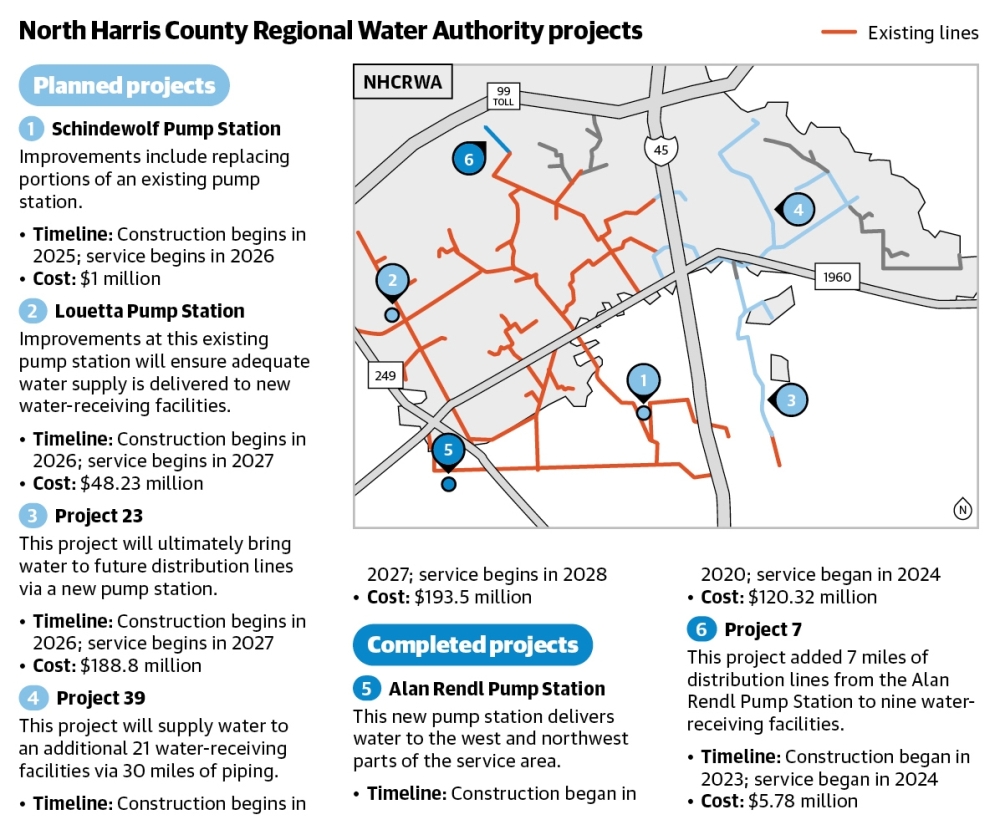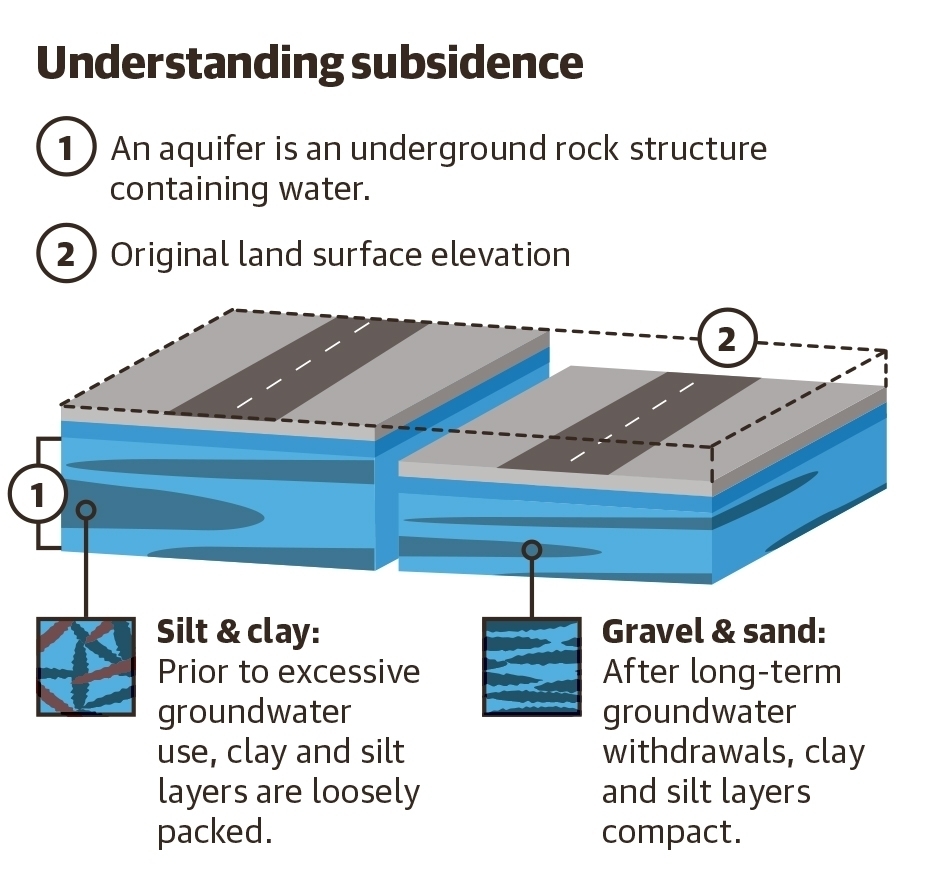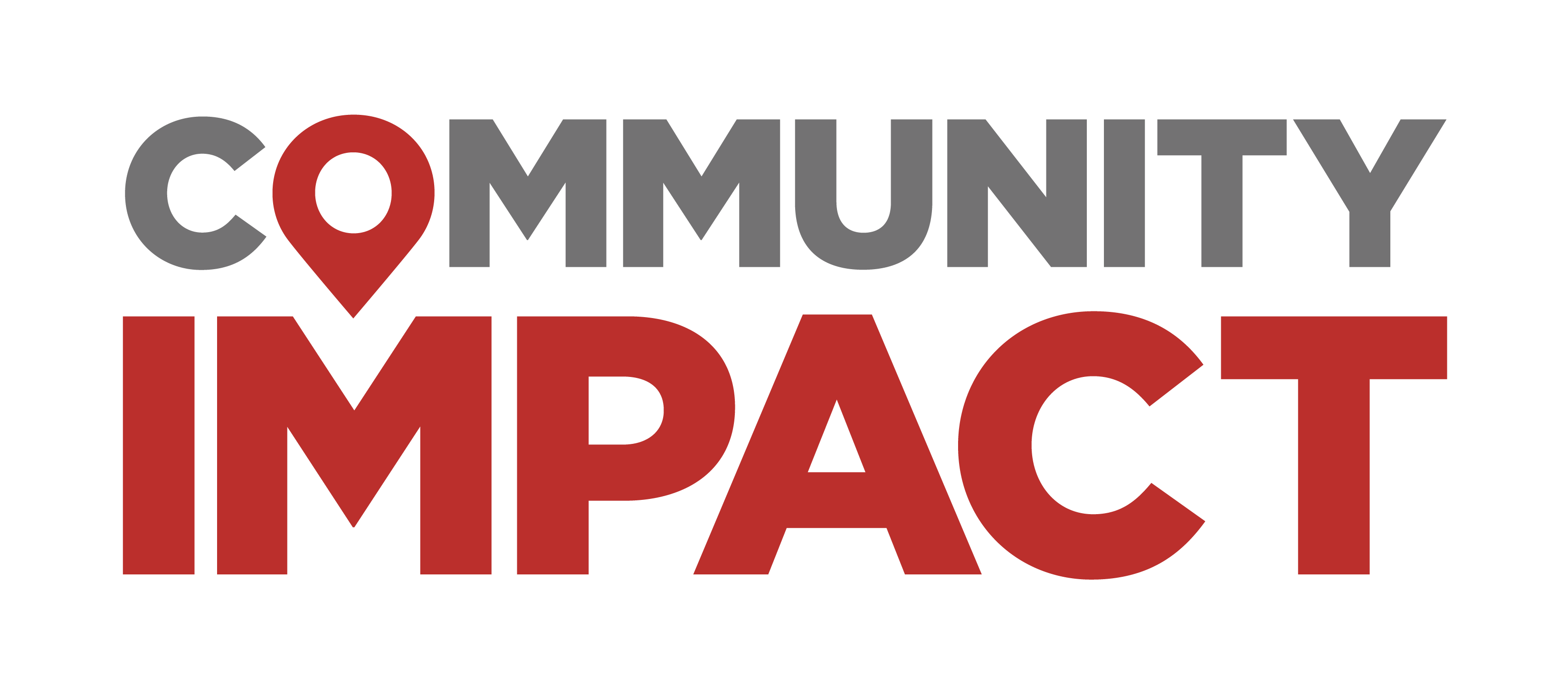HGSD data from 2019-23 shows the Greater Houston area continues to experience subsidence, or the collapsing of the land due to movement beneath the earth’s surface. HGSD General Manager Mike Turco said the phenomenon is often caused by groundwater withdrawal.
Officials said northwest Harris County has seen increased subsidence over the last four years. To alleviate this, water authorities must follow HGSD’s plan and have 60% of their jurisdictions using surface water by the end of 2025 and 80% by 2035.
What’s happening
The North Harris County Regional Water Authority is working on several projects to convert groundwater use to surface water use. NHCRWA General Manager Jun Chang said about 32%-34% of its total water usage currently comes from surface water.
Chang said most of the NHCRWA’s projects for the 2025 surface water deadline focus on expanding water lines. Loops of water lines connect municipal utility districts to pump stations, and each loop expansion helps create a more interconnected internal distribution system to deliver surface water to increasingly distant areas as the network grows.
“We are now in the process of completing the third loop [of the distribution system],” Chang said. “Eventually, we are going to go beyond the third loop to meet the required conversion percentage.”
The NHCRWA, city of Houston and other water authorities are collaborating on the $1.97 billion Northeast Water Purification Plant expansion project. Located on Lake Houston, the project is expected to add 320 million gallons of treatment capacity to the water treatment plant, which serves areas across Harris County, including Spring and Klein.
Most projects are paid for through bonds, funds from state entities and co-funding agreements. Board member Mark Ramsey said the NHCRWA is $2.7 billion in debt, and it’s expected to climb to $7 billion in the next 10 years. He hopes the Texas Legislature can provide “regulatory relief” to avoid unsustainable water rates.
“We’re now headed toward $15 billion in cost with interest. ... We don’t have even $100 million of actual damage [from subsidence] identified,” Ramsey said. “Why are we doing this government-mandated project to fix something that may or may not actually be a problem?”

The background
Water rates customers pay correlate to how much debt is incurred from bonds issued for building water infrastructure, Chang said.
Despite ongoing projects, the NHCRWA’s rates are now at their lowest in a decade after the board cut rates over the past two years following the election of three new board members who unseated longtime incumbents in 2022.
While the cuts provide short-term relief for water users, Chang said a financial adviser estimated they could only last another six months before an increase is likely. The NHCRWA could see rates exceed $8 per 1,000 gallons by 2032.What it means
Turco described subsidence as the gradual sinking of land caused by the extraction of fluids from an aquifer system. As groundwater is pumped out, the water levels within the aquifer decline, causing the clay layers in the aquifer to depressurize and compact.

The impact
Population growth and water demand can impact subsidence, which can lead to more flooding, permanent land loss and infrastructure damage, Turco said.
HGSD data shows that areas in Spring and Klein saw an average of 0.76-1.83 centimeters of displacement per year between 2019-23. Parts of Harris County still relying on groundwater tend to have higher levels of subsidence, Turco said.
“Those areas are primarily on groundwater, and subsidence rates there have been fairly consistent,” Turco said. “In recent years, we’ve seen rates pick up.”
For instance, a subsidence monitoring station located off Lindell Road near Southwell Park had the highest rate of annual subsidence with over 30 centimeters of displacement since monitoring began in 2007. This location falls within the 77373 ZIP code, which has grown 15.5% in population from 2018-23, according to five-year estimates from the U.S. Census Bureau’s American Community Survey.
Subsidence measured at local monitoring stations include:
- Lindell Road near Southwell Park: 30.5 cm since 2007
- Spring High School: 11.1 cm since 2014
- North Bend Drive: 67 cm since 1994
- South Tranquil Path Drive: 3.9 cm since 2020
- FM 2920 near Hooks Airport: 21 cm since 2007
- Hwy. 249 near Timber Tech Avenue: 24.8 cm since 2007
- Beneke Elementary School: 43.5 cm since 1999
State Rep. Tom Oliverson, R-Cypress, filed House Bill 1643 on Dec. 17 to reduce the HGSD’s authority over the NHCRWA.
The bill aims to:
- Remove the NHCRWA from the HGSD’s jurisdiction
- Exempt the entity from groundwater reduction requirements
- Let the NHCRWA set their own timelines for transitioning to surface water use
“If we don’t get regulatory relief and we don’t get funding from other sources, that will drive [water rates] to $15, maybe $20 per 1,000 gallons, which is obviously an unsustainable number,” Ramsey said.





